Each year in early October, deacons and church secretaries in Christian Reformed congregations across North America go into their storage closets and church basements to pull out boxes of orange plastic fish. By mid-October, the fish-shaped banks become a source of energy and excitement as Sunday school children and their parents fill them with coins and bring them to church for World Hunger Sunday, designated by synod as the first Sunday in November. It’s a tradition that Christian Reformed churches have observed for years—a tradition that makes a difference in people’s lives around the world.
World Renew/CRWRC's annual World Hunger Campaign celebrates its 34th birthday this year.
In 1978, synod (the broadest decision-making body of the CRC) stated that “the alleviation of hunger at home and abroad is an integral part of our Christian responsibility.” It asked “that all members of the Christian Reformed Church devote themselves to gratitude, compassion, repentance, and justice as they respond to world hunger with a ministry of word and deed.”
To assist with this mandate, the church set aside a special Sunday once a year to focus on world hunger and asked World Renew to provide educational and support materials for this day of prayer and fasting.
The first World Hunger Sunday was held in 1979. While the themes and promotional elements of the campaign have changed over time, the overall mission of World Renew’s World Hunger Campaign remains the same: to help members of the CRC remember the needs of people around the world and become part of the solution to end hunger and poverty.
One Church, One Day, One Country
In the early years, World Renew’s World Hunger Campaign focused on a single country. The Christian Reformed Church had decided that given the size of its membership and the generosity of its churches, it could have a strong impact if it dedicated its attention to one country in need. The denomination chose Sierra Leone as the recipient country and sent World Renew and Christian Reformed World Missions staff there.
The first four years of World Renew’s World Hunger Campaign focused on the work of the church in Sierra Leone and encouraged congregations to pray, fast, and give as they considered the needs of their neighbors.
By 1983, however, the outreach of the CRC and World Renew had grown, and the content of the annual World Hunger Campaign was expanded to include facts and stories from around the world. World Renew was also receiving requests from churches to provide more education, activities, speakers, and presentations than could fit into one Sunday service.
As a result World Hunger Sunday expanded into a multi-week World Hunger Campaign usually starting the week after Canadian Thanksgiving in October and extending to the first Sunday in November.
A Fish is Born

The name “Peter Fish” refers to the story in Matthew 17 where Peter catches a fish that has a coin in its mouth. It also refers to a fish in the Sea of Galilee that carries its young in its mouth to protect them. When the young go out on their own, the mother fish fills the gap in her mouth with a coin, a bottlecap, or some other round object she finds. The locals call the fish “St. Peter’s Fish.” When they catch one, they sometimes find a coin in its mouth.
The 1995 campaign included education around the proverb “If you give someone a fish, they eat for a day. If you teach them to fish, they’ll eat for a lifetime.” The campaign explored World Renew’s long-term and sustainable approach to helping communities in poverty.
Since 1995, Peter Fish banks have continued to be an integral part of the annual campaign. So much so, in fact, that when Calvin College in Grand Rapids, Mich., distributed the banks around campus in support of the campaign, students remembered them from their childhoods and eagerly took them back to their dorms.
Today, every World Renew World Hunger Campaign includes daily giving suggestions that make people aware of the needs of people around the world and gives us an opportunity to give a specific amount into their Peter Fish banks.
What Good Does It Do
According to the Food and Agriculture Organization, the percentage of hungry people in the developing world has dropped dramatically over the past 30 years. From 1969-1971, approximately 26% of people in the world were hungry. By 2008, this number had decreased to 13%. The Christian Reformed Church and World Renew have played a part in this success.
Last year, over 650 churches, schools, and businesses participated in World Renew’s World Hunger Campaign and raised approximately $1.1 million for World Renew’s work around the world. As a result, World Renew was able to work in 30 countries to help individuals, families, and entire communities improve their lives, income, and food production in lasting ways.
There is still much to do, however. The FAO estimates that there are 925 million hungry people in the world today. Join World Renew in responding by participating in this year’s World Hunger Campaign or attending a World Hunger Sunday service on November 4.
This year’s theme is “A Heart for the World” and will provide an opportunity for individuals and congregations to learn about God’s heart for the world, mold their own hearts to be more like His, and celebrate the work that has been accomplished over the past 50 years through World Renew.



